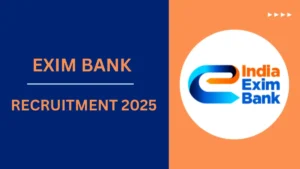Directions (1-5): In the following questions, the symbols $, %, @, © and * are used with the following meaning as illustrated below:
‘P % Q’ means ‘P is neither greater than nor smaller than Q’.
‘P $ Q’ means ‘P is neither smaller than nor equal to Q’.
‘P © Q’ means ‘P is neither greater than nor equal to Q’.
‘P * Q’ means ‘P is not greater than Q’.
‘P @ Q’ means ‘P is not smaller than Q’.
Now in each of the following questions, assuming the given statements to be true, find which of the three conclusions I, II and III given below them is/are definitely true and give your answer accordingly.
Q1. Statements: V © K, K @ B, B $ M
Conclusions:
I. V © B
II. M © K
III. M © V
(a) None is true
(b) Only I is true
(c) Only II is true
(d) Only III is true
(e) Only II and III are true
Q2. Statements: D * R, R % F, F $ T
Conclusions:
I. F % D
II. F $ D
III. T © R
(a) Only I is true
(b) Only II is true
(c) Only III is true
(d) Only either I or II is true
(e) Only either I or II and III are true
Q3. Statements: N @ D, D * K, K $ A
Conclusions:
I. K @ N
II. A © D
III. N $ A
(a) None is true
(b) Only I is true
(c) Only II is true
(d) Only III is true
(e) Only II and III are true
Q4. Statements: K @ T, T $ N, N © R
Conclusions:
I. R $ K
II. N * K
III. K $ N
(a) None is true
(b) Only I is true
(c) Only II is true
(d) Only III is true
(e) Only II and III are true
Q5. Statements: W % K, K © F, D $ F
Conclusions:
I. D $ K
II. D $ W
III. F @ W
(a) Only I and III are true
(b) Only I and II are true
(c) Only II and III are true
(d) All I, II and III are true
(e) None of these
Directions (6-10): Study the following arrangement carefully and answer the questions given below:
4 K @ 1 E F © 2 H D % 3 8 B I M 6 * U W Y 5 $ 9 G J # 7 A
Q6. Which of the following is the eighth to the left of the nineteenth from the left end of the above arrangement?
(a) %
(b) U
(c) D
(d) #
(e) None of these
Q7. How many such consonants are there in the above arrangement, each of which is immediately preceded by a letter and immediately followed by a number?
(a) None
(b) One
(c) Two
(d) Three
(e) More than three
Q8. Four of the following five are alike in a certain way based on their positions in the above arrangement and so form a group. Which is the one that does not belong to that group?
(a) F 2 ©
(b) J G $
(c) W 5 Y
(d) D 3 %
(e) 5 9 $
Q9. If all the numbers in the above arrangement are dropped, which of the following will be the fourteenth from the left end?
(a) M
(b) %
(c) D
(d) W
(e) None of these
Q10. How many such symbols are there in the above arrangement, each of which is immediately preceded by a letter and immediately followed by a number?
(a) None
(b) One
(c) Two
(d) Three
(e) More than three
Directions (11-15): Study the following information carefully and answer the questions given below:
Eight persons, viz A, B, C, D, E, F, G and H are sitting around a circular table facing towards the centre of the table but not necessarily in the same order. Each of them has a different age viz. 21, 32, 19, 25, 27, 33, 20 and 16 but not necessarily in the same order.
A, who is16 year old, sits third to the left of E. The one who is 20 year old sits on the immediate right of A. D, who is 32 year old, sits second to the right of B. B does not sit adjacent to E. C, who is 19 year old, sits exactly in the middle of the one who is 27 year old and the one who is 20 year old. G is 21 year old and sits second to the left of H who is 33 year old.
Q11. Who sitting third to the right of D?
(a) C
(b) E
(c) G
(d) B
(e) None of these
Q12.Who is sitting exactly between G and H?
(a) The one who is 27 year old
(b) The one who is 32 year old
(c) The one who is 25 year old
(d) The one who is 21 year old
(e) None of these
Q13. Who is sitting opposite to F?
(a) B
(b)A
(c) C
(d) D
(e) None of these
Q14. Who is sitting third to the right of a person who is 20 year old?
(a) The one who is 27 year old
(b) The one who is 21 year old
(c) The one whois 19 year old
(d)The one who is 16 year old
(e) None of these
Q15 If G is related to H, and H is related to A, in the same way, F is related to?
(a) A
(b) B
(c) D
(d) E
(e) None of these





 GA Capsule for SBI Clerk Mains 2025, Dow...
GA Capsule for SBI Clerk Mains 2025, Dow...
 The Hindu Review October 2022: Download ...
The Hindu Review October 2022: Download ...
 Exim Bank Recruitment 2025 Notification ...
Exim Bank Recruitment 2025 Notification ...





